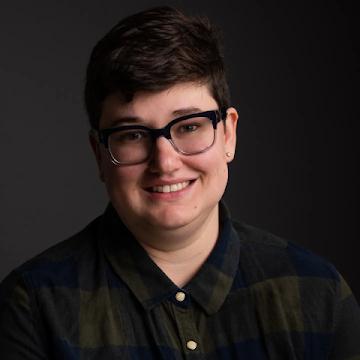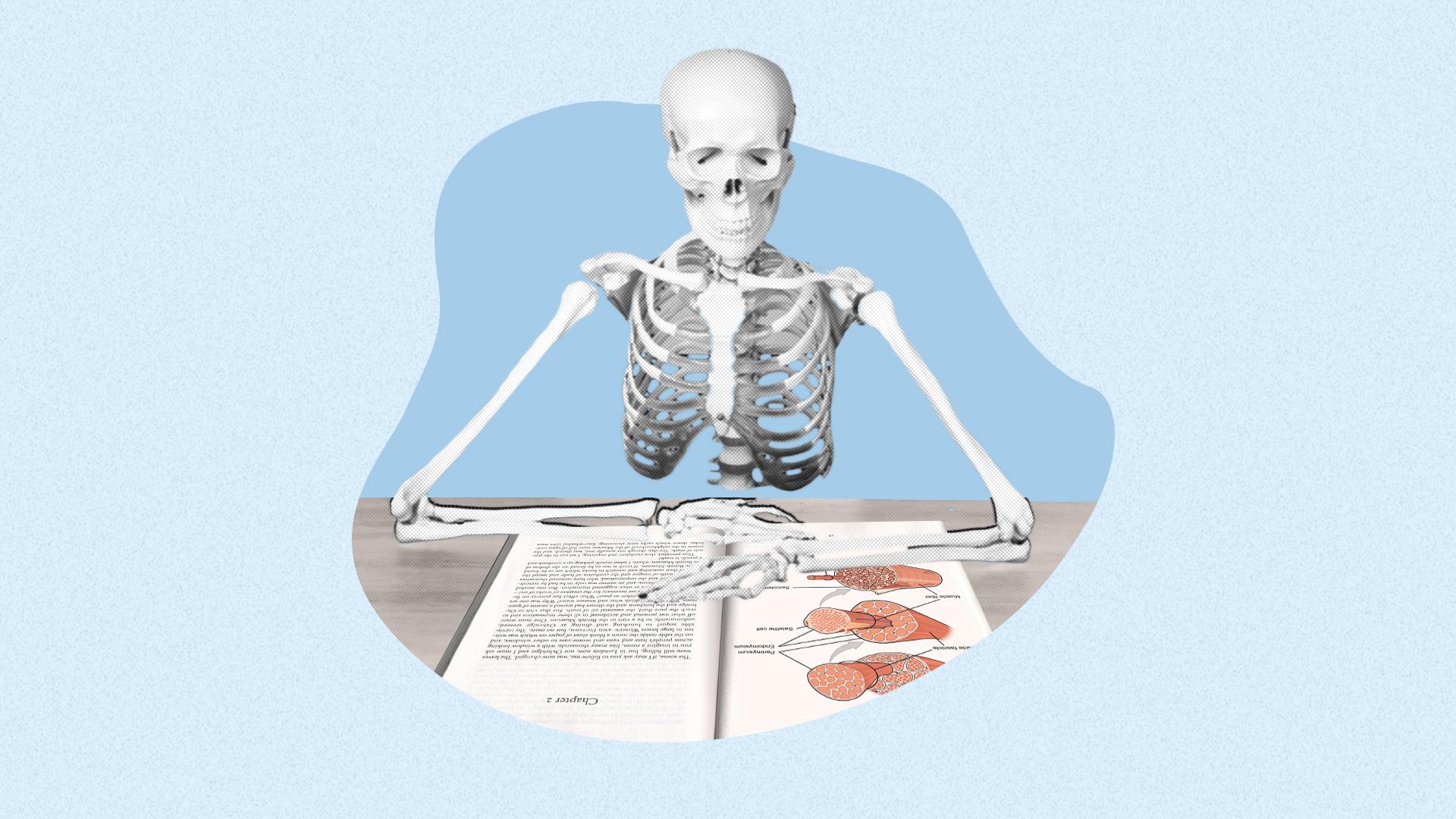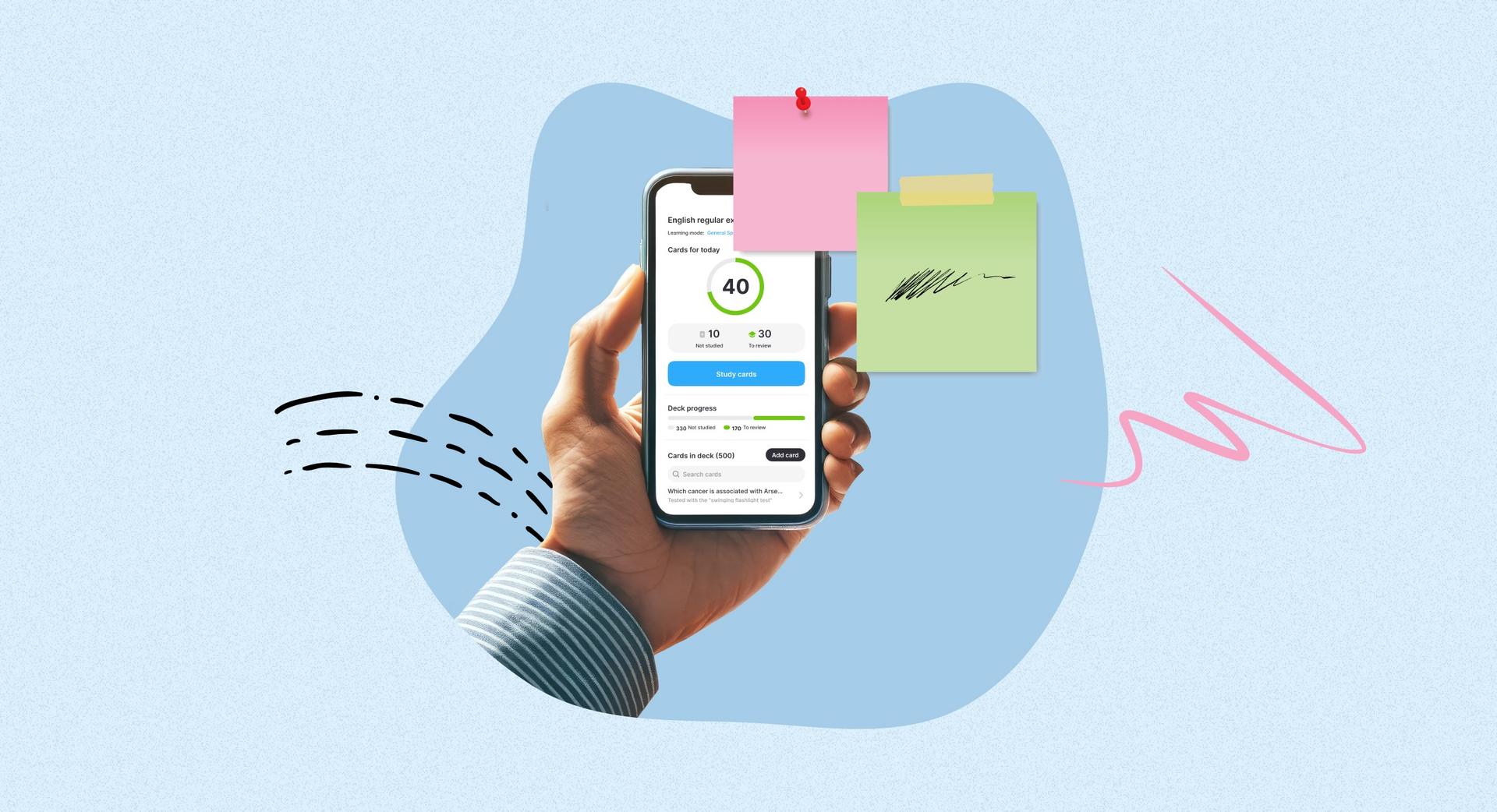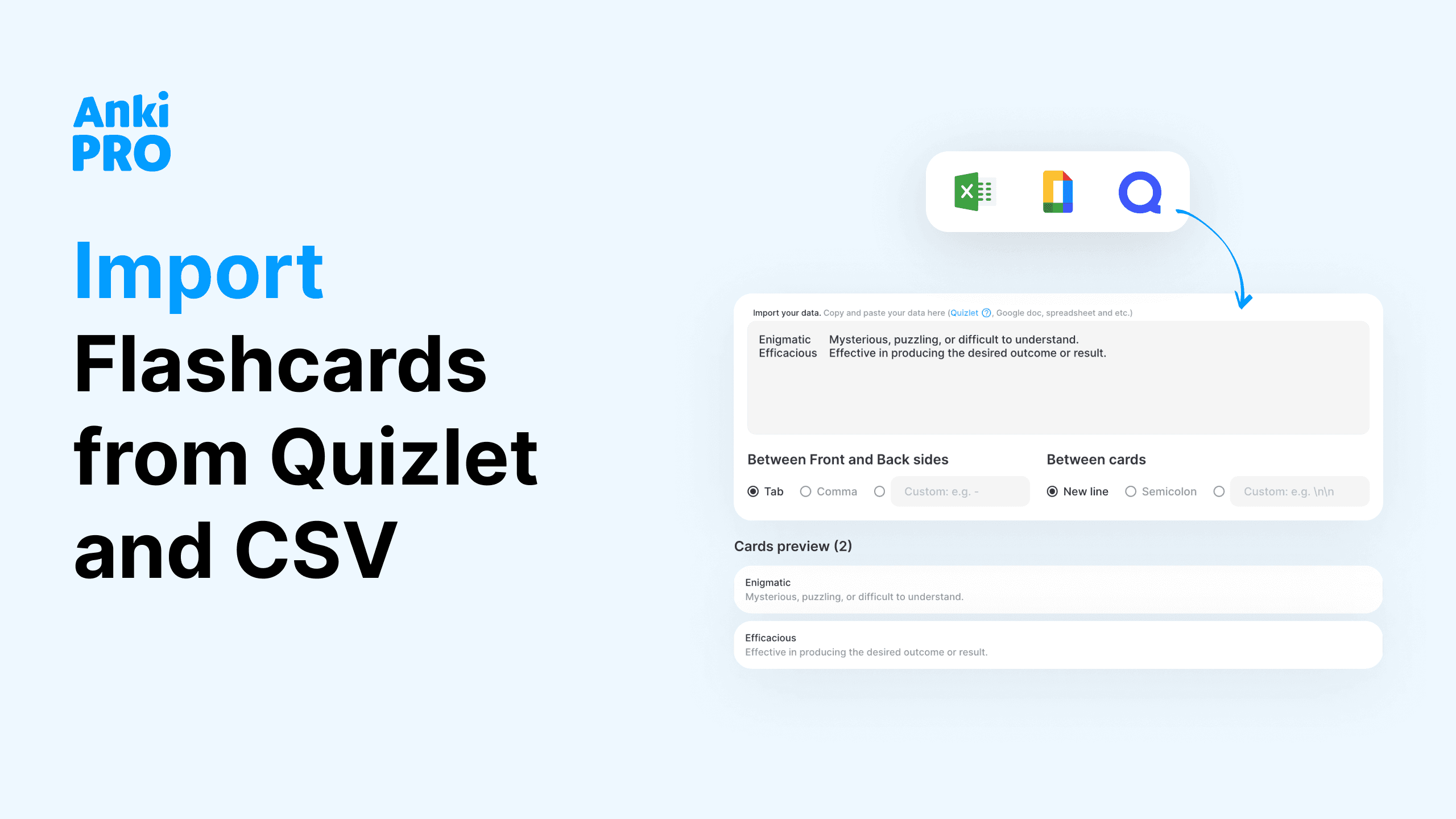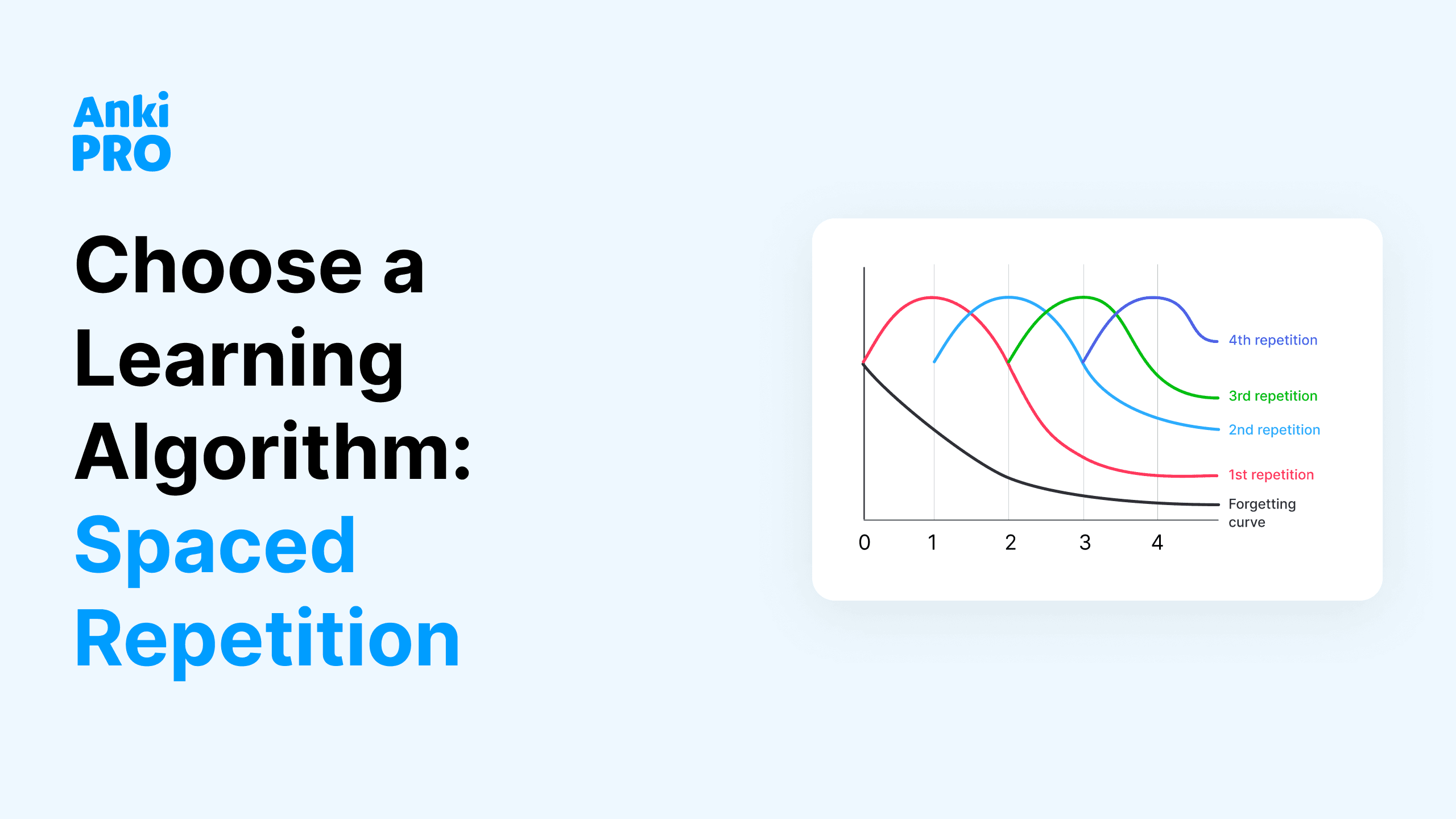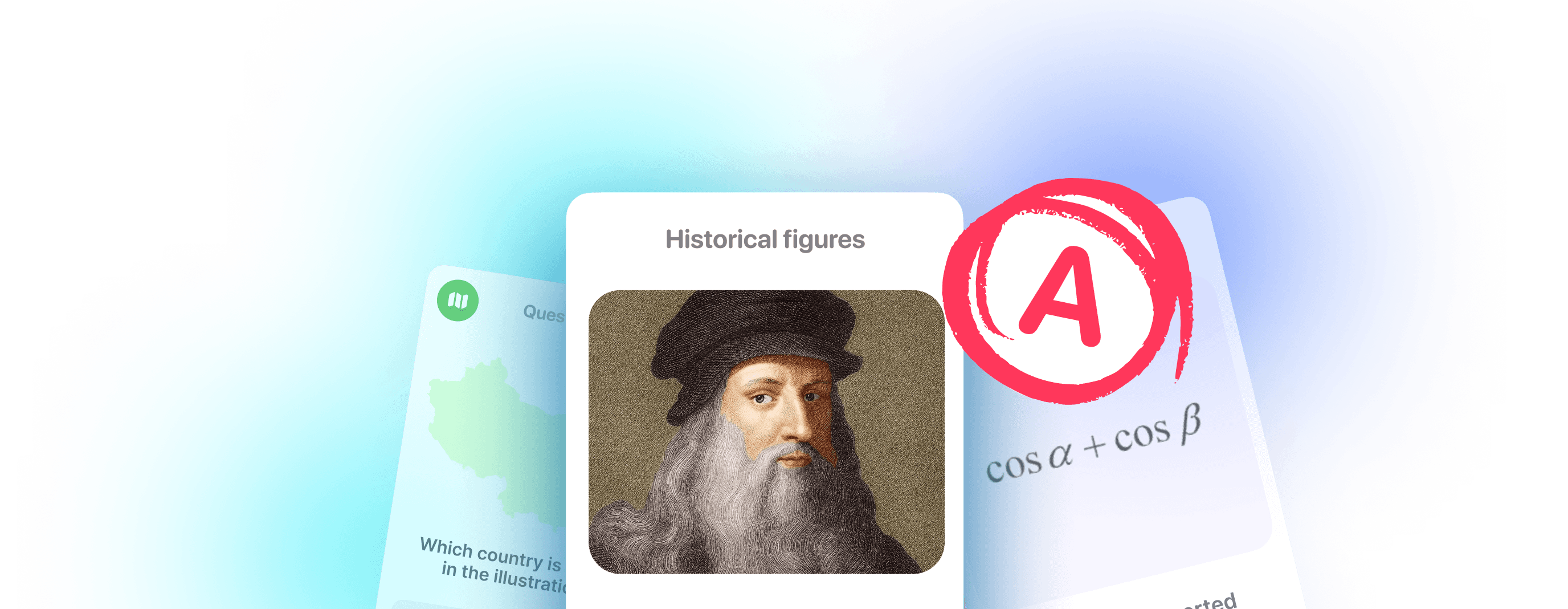Learning disabilities and learning disorders are misunderstood and more common than you may think. It’s estimated that 1 in 5 people in the United States has a learning disability. That’s over 65.6 million people. Each one of these people is unique in their needs and abilities, but they all have the right to an appropriate education and the potential to succeed with the right support. Whether you’re an educator, a parent, or a student with a learning disability yourself, we’ll break down what learning disabilities are and the supports that can help to study smart.
What Are Learning Disabilities?
A learning disability, also known as a learning disorder or learning difficulty in the UK, is defined as a disability that affects the ability to understand written or spoken language, solve math problems, coordinate movements, or direct attention. Children are born with these disabilities, but they become noticeable when they reach school age. Some examples of common learning disabilities include:
- Dyslexia
- Dysgraphia
- Dyscalculia
- Auditory processing disorder (APD)
- Language processing disorder (LPD)
- Nonverbal learning disabilities (NVLD)
- Visual perceptual/visual motor deficit
- Attention deficit hyperactivity disorder (ADHD)
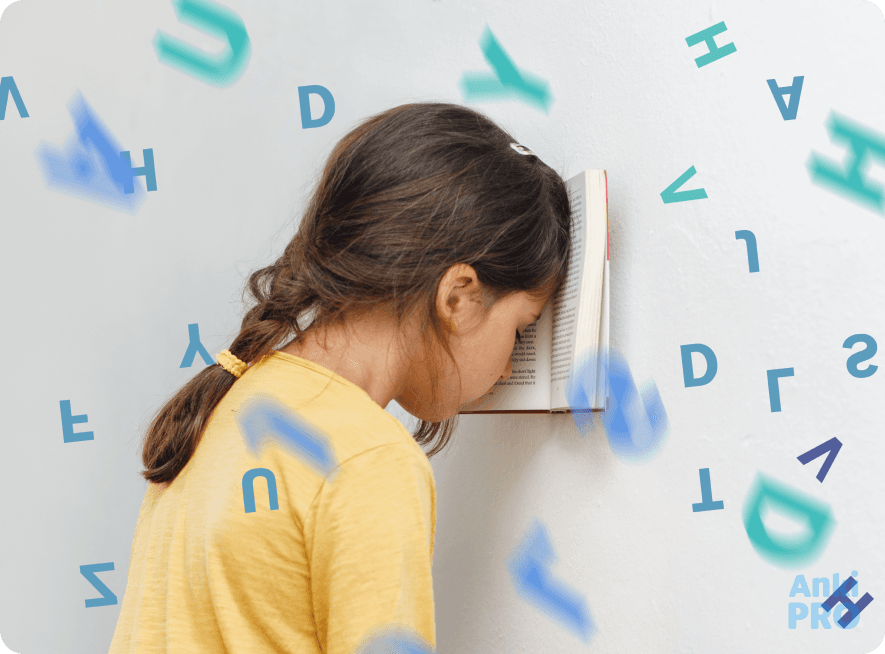
How Specific Learning Disabilities Affect Academic Skills
There is some overlap in symptoms for a lot of learning disabilities. Comorbidity, or having more than one learning disorder at once, is also fairly common. Many dyslexic students, for example, also have dyspraxia or dyslexia. Some common learning disability symptoms include:
- Poor memory
- Difficulty focusing
- Poor language skills
- Poor motor skills
- Difficulty with high-level concepts
Here’s some more information about how the most common specific learning disorders affect students’ learning problems and how teachers and school personnel can accommodate them.
Dyslexia
Dyslexia is a learning disorder that affects a child’s ability to master language skills. It is the most common learning disability, affecting 3-7% of the global population. People with dyslexia struggle with reading, writing, and spelling. These academic difficulties can also lead to trouble with grammar, reading comprehension, and delays in developing vocabulary. Students with dyslexia can succeed academically with extra tutoring and accommodations in the classroom.
Dysgraphia
Dysgraphia is a specific learning disability characterized by trouble with handwriting and fine motor skills. It appears to be caused by difficulty storing and automatically retrieving letters and numbers. The most noticeable trait of dysgraphia is illegible handwriting. People with dysgraphia also have a hard time putting their thoughts into words and many struggle with spatial awareness, planning, and organizing. Like dyslexia, students with dysgraphia can do well in a school system with extra support.
Dyscalculia
Dyscalculia, commonly known as “math dyslexia” is characterized by difficulty understanding numbers, math symbols, and mathematical calculations. This doesn’t just mean struggling with math homework. In early childhood, children with dyscalculia struggle with counting. Telling time, shopping, cooking, and other life skills that use basic math concepts can also be tough. Experts don’t know as much about dyscalculia as they do about dyslexia, but they estimate that it affects a similar percentage of the population. It’s also fairly common for people to have both learning disorders.
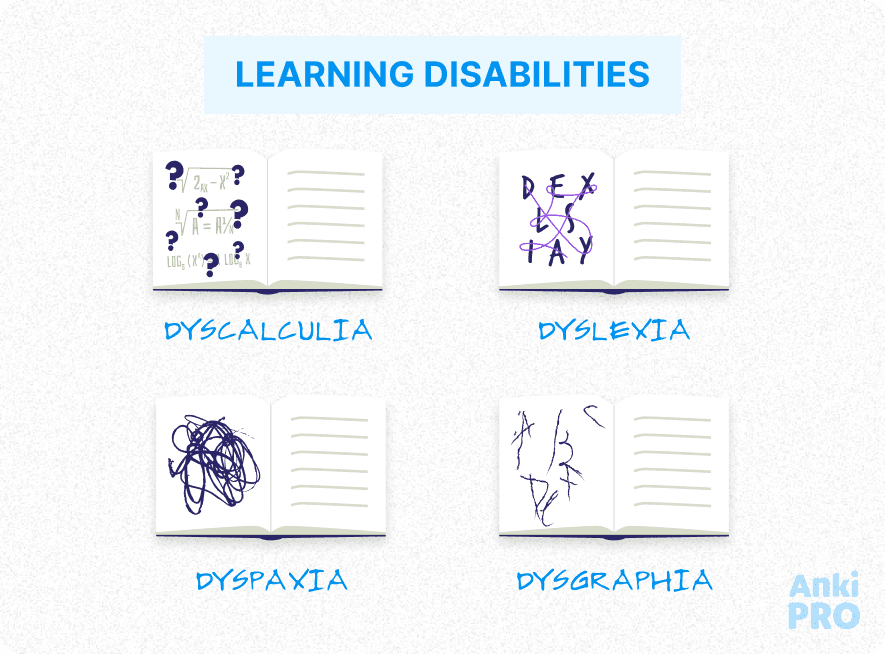
Auditory Processing Disorder (APD)
Auditory processing disorder is a disruption between what a person hears and what they understand. It’s not a form of hearing loss, though it can look similar. People with APD have delays in understanding what people say to them and have a hard time separating spoken words from background noises. This can also mean struggling with following spoken directions, summarizing spoken information, paying attention during lectures, and understanding non-literal language. According to school reports, teachers can better accommodate this learning disability by always accompanying verbal instructions with written and visual cues and using an FM system to amplify their voice above the background noise levels.
Language Processing Disorders (LPD)
Language processing disorders is a specific learning disorder that can affect communication through spoken language. Two kinds of disorders fall under this category: expressive and receptive. People with expressive language processing disorder struggle with putting their thoughts into words and verbally expressing what they’re thinking. According to American Psychiatric Association, for school children, this may look like:
- Limited vocabulary for their age
- Confusing verb tenses
- Repeating scripted phrases
- Struggling to learn new words
People with receptive language processing disorder struggle to understand what other people are saying. This could look like:
- Difficulty following directions
- Not getting jokes and idioms
- Seeming shy or uninterested in socializing
An estimated 5% of people in the United States have LPDs, but there could be many more since they are so often misdiagnosed and overlap with other diagnoses.
Nonverbal Learning Disabilities (NVLD)
Nonverbal learning disabilities isn’t a diagnosis in the diagnostic and statistical manual (the guide to diagnostic criteria for all known mental disorders), but an umbrella term that refers to challenges with motor, visual-spatial, and social skills. These nonverbal learning disorders don’t affect a person’s language or math skills, but children with NVLD often need to be taught skills that seem intuitive to their neurotypical peers. A lot of people with NVLD also have autism or ADHD diagnoses.

Visual Perceptual/Visual Motor Deficit
Visual perceptual/visual motor deficit affects people’s ability to interpret information they see. Similar to auditory and language processing disorders, it’s caused by a disconnect between what the person sees and how they interpret it. Students with this disorder often have trouble reading, navigating, copying information, and recognizing words. Audiobooks, typing, and other accommodations can help students with visual perceptual/visual motor deficits be more successful in school.
Attention Deficit Hyperactivity Disorder (ADHD)
ADHD is one of the most common neurodevelopmental disorders. It’s characterized by difficulty concentrating, poor time management, and often hyperactivity or impulsivity. Many, but not all children with ADHD have behavioral issues. ADHD is also one of the more treatable learning disorders. It can be treated with medication, therapy, and support groups. Schools can help students with ADHD succeed academically with accommodations like:
- A child’s behavior management plans
- Teaching study skills
- Extra time on tests and assignments
- Seating in the classroom where the child can focus better
How Can Educators Support Children with Learning Disabilities?
Supporting students with learning disorders isn’t just the right thing to do. In many places, it’s the law. In the United States, the Individuals with Disabilities Education Act or IDEA requires school-age youth with disabilities (3 to 21) to access “free appropriate public education in the least restrictive environment”. The law sets standards for special education services and Individualized Education Plans (IEPs). You can find details about the law and resources for educating students with disabilities on their website.
Special education looks different for every student based on individualized education programs. Some students are in special ed classes all day, others take regular classes all day but have accommodations, and most students with learning disorders are somewhere in between. One of the defining principles of IDEA is that students with disabilities should learn alongside their peers as much as possible. This is to prevent segregation and discrimination based on disability. There is a process that schools are required to follow to determine what services school-aged children with learning disabilities need.
The best thing you can do for a student with disabilities and mental health conditions is to aim to understand them, not “fix” them. What accommodations do they need? What are their hopes for the future? What do they do well? Learning about your students’ disabilities, including perspectives from adults with the same specific learning disorders, can help you understand how to help them succeed within their abilities. The Learning Disabilities Association of America is a good place to start.
How Do Professionals Diagnose Learning Disabilities in Students?
If a child’s teacher suspects that a student may have a learning disability, the school is required to evaluate the child at no cost to their parents or guardians. This process is called Child Find. The evaluation is usually done by a school psychiatrist and involves:
- An achievement test: tests reading, writing, and math. It may also include an IQ test.
- A review of past academic performance: a review of the person’s grades, social skills, and behavioral history.
- A medical history review: questions about personal and family history. Learning disabilities are often genetic.
- A physical and neurological exam: checking for other conditions to explore all possibilities.
The child may also be referred to a specialist if they need further evaluation. If they do determine that the child needs special education, the next step is to create an IEP.

What is an Individualized Education Plan (IEP)?
An Individualized Education Plan (IEP) is a document that outlines the educational needs of a student with a disability. Any student from preschool to university who has been evaluated as needing the form of a specific learning disability, autism, emotional disturbance, other health impairments, intellectual disability, orthopedic impairment, multiple disabilities, hearing impairments, deafness, visual impairment, deaf-blindness, developmental delay, speech/language impairment, or traumatic brain injury is eligible for one. A student’s individualized education program is a team effort between
- The student’s parents or guardians
- The student’s regular education teacher (if applicable)
- A special education teacher
- A school psychologist or social worker
- An administrator
- Any other professional deemed necessary
The goal is to determine the best way to meet the student’s needs with the resources the school can provide. Since students’ needs change over time, as their cognitive skills develop, the IEP team meets to make changes as the student gets older.
Study Tips for Students with Learning Disabilities
A lot of mainstream study tips are written with neurotypical brains in mind. As a result, many children with learning disabilities struggle with self-esteem issues and risk getting emotional trauma by not fitting into public schools.
Here are a few tips that some special education teachers recommend and students with learning disabilities may find helpful:
Set a routine
Setting and sticking to a routine can help make studying as easy and comfortable as possible. And you don’t have to be strict with yourself to make it happen. You can do that by studying at the same time and place every day. Make it a time when you’re alert and focused.
If you feel tired when you get home from school, do other things first. If you don’t like waking up early, don’t force yourself to to study. Your study space should be somewhere where you can be comfortable and productive. Keep everything you need nearby and banish distractions as much as you can. And keep snacks nearby. It’s hard to focus when you’re hungry.
Study in groups
If you have trouble learning and approaching academic tasks, the solution may not be to lock yourself away from all distractions. A lot of people with ADHD struggle with the lack of discipline, so they work better in pairs and groups. In these settings, you can hold each other accountable, ask each other for help, or even just work in silence with someone nearby. That last part is called “body doubling.”
Turn what you can into a game
Studying doesn’t have to be boring to “count”. Turning it into a game can make memorization easier and make the time go by faster. Since most educational games combine types of input (visual, auditory, text), they can strengthen associations when reading or listening alone can’t. Flashcards, puzzles, and online games for all ages and abilities could be your studying friends.
Study in bursts and take breaks
You don’t have to study for hours on end. Most people shouldn’t. If you have trouble staying on task for extended amounts of time, you might like the Pomodoro Method. The method is simple: study for 20 minutes, take a five-minute break, repeat.
You can modify it to fit what works for you. Some people work longer spurts or take longer breaks. Some people take a longer break, more like 10 or 15 minutes, after four work spurts. Feel free to tweak it to find what works best for you.
Use spaced repetition
Spaced repetition is a method to memorize material more efficiently by spacing out your reviews of material. Anyone can benefit from spaced repetition, but it can be especially helpful if you struggle with memorization. It’s perfect not only to train short-term memory, but for building knowledge that sticks for years. Start with frequently reviewing material, then space out your review sessions over time.
Flashcard apps like Anki Pro operate on spaced repetition so you don’t have to calculate how far apart to space your sessions on your own. Scheduling your study sessions, keeping them short and focused, and varying your types of review can help you make the most of it.
Work with your brain, not against it
Working against the way your brain operates can be bad for your mental health in the long run. Just like a good teacher shouldn’t try to make disabled students more like their neurotypical peers, don’t put that pressure on yourself either. Comparing yourself to others is doing yourself a disservice. Learning how to accommodate yourself can help you shine in your own way.
Knowing what you need to study well can help you advocate for the accommodations you need in the classroom. You may get discouraged, after all, everyone does. When that happens, say or write down some things you do well. With the right support and study plans, your brain can be your friend.
